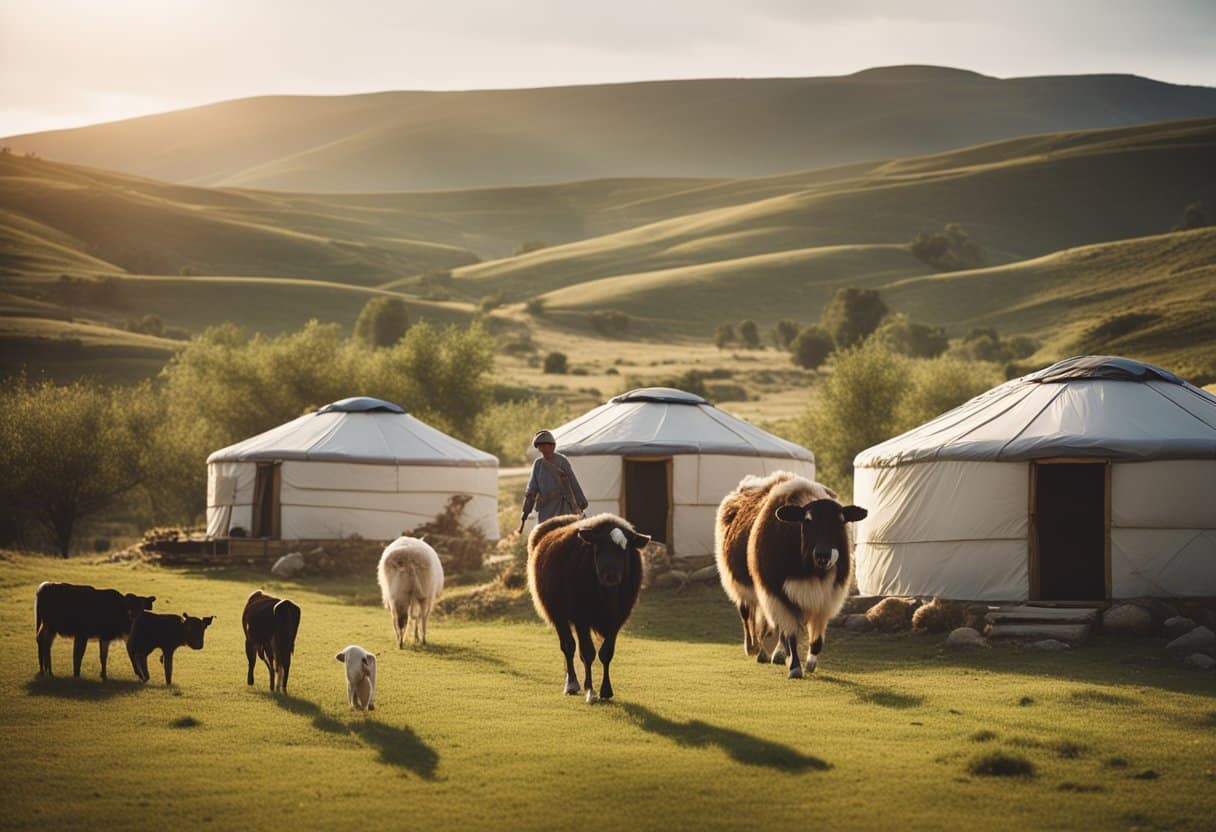7:02 PM Renaissance of Nomad Culture in Mongolia: A Modern Twist to Ancient Traditions | |

In the heart of Central Asia, Mongolia is undergoing a cultural renaissance. Once perceived solely as the land of Genghis Khan and endless steppes, this enigmatic nation is redefining itself as a modern hub that cherishes its nomadic heritage while embracing technological advancement. This delicate balance has become a defining feature of Mongolia’s identity in the 21st century. Revival of Nomadic PracticesFor centuries, Mongolia’s identity has been tied to its nomadic traditions. About 30% of its population still leads a nomadic or semi-nomadic lifestyle, moving across the vast grasslands with herds of yaks, goats, and camels. However, urbanization has put pressure on this way of life, particularly as more people migrate to Ulaanbaatar, the capital city, in search of economic opportunities. Recognizing the risk of losing a cornerstone of their culture, Mongolian authorities and NGOs have launched initiatives to preserve and adapt nomadic practices. In recent years, these efforts have included supporting local artisans to produce traditional felt textiles, yurts (known locally as "gers"), and horse-riding equipment. These items are not only being used domestically but are also being exported, bringing Mongolian craftsmanship to the global market. Technology Meets TraditionInterestingly, technology has become an unexpected ally in this cultural preservation. Nomadic herders are now equipped with solar panels, smartphones, and GPS devices. These tools enable them to stay connected with the wider world while maintaining their traditional lifestyle. The integration of technology is also evident in educational programs, where remote herder families use online platforms to access schooling for their children. Furthermore, tech startups in Ulaanbaatar are developing apps and services tailored to herders. For instance, one app provides real-time weather updates and market prices for livestock, ensuring herders make informed decisions. This blend of innovation and tradition is emblematic of Mongolia’s evolving identity. Eco-Tourism: A Booming IndustryMongolia’s untouched landscapes and rich cultural heritage have attracted a surge in eco-tourism. Tourists from around the globe flock to experience the Naadam Festival, a summer event showcasing the "Three Manly Games": wrestling, horse racing, and archery. In addition to these traditional sports, visitors are drawn to activities such as eagle hunting, which is practiced by the Kazakh minority in western Mongolia. To ensure that tourism benefits local communities, the government has implemented strict regulations to protect the environment and cultural sites. Many tour operators now collaborate with nomadic families, providing tourists with authentic experiences while creating a source of income for the herders. Ulaanbaatar: A City of ContrastsUlaanbaatar, Mongolia’s bustling capital, is a striking contrast to the nomadic lifestyle. With nearly half the country’s population residing there, the city is a melting pot of ancient traditions and modern aspirations. Skyscrapers rise alongside centuries-old monasteries, and trendy cafes serve as gathering places for young entrepreneurs. The city has become a hub for creative industries, including fashion, music, and film, all of which draw heavily from Mongolia’s nomadic heritage. Designers are incorporating traditional patterns and materials into contemporary clothing, while musicians are blending throat singing with modern genres like hip-hop and electronic music. Challenges and OpportunitiesDespite its progress, Mongolia faces significant challenges. Climate change poses a severe threat to the fragile ecosystems that sustain nomadic life. The country has experienced increasingly harsh winters, known as “dzuds,” which have decimated livestock populations and forced many herders to abandon their traditional livelihoods. To address these issues, Mongolia is investing in renewable energy and sustainable development. The country’s vast wind and solar resources have the potential to transform it into a regional leader in green energy. Simultaneously, international collaborations are focusing on mitigating the effects of climate change and supporting vulnerable communities. A Vision for the FutureAs Mongolia looks to the future, it remains deeply rooted in its past. The country’s ability to adapt its nomadic traditions to the demands of modern life is a testament to its resilience and ingenuity. By preserving its heritage while embracing innovation, Mongolia is charting a unique path forward—one that holds lessons for a world grappling with the challenges of globalization and cultural preservation. This renaissance of nomadic culture is more than a revival; it is a reinvention that ensures the spirit of Mongolia continues to thrive in an ever-changing world. | |
|
| |
| Total comments: 0 | |